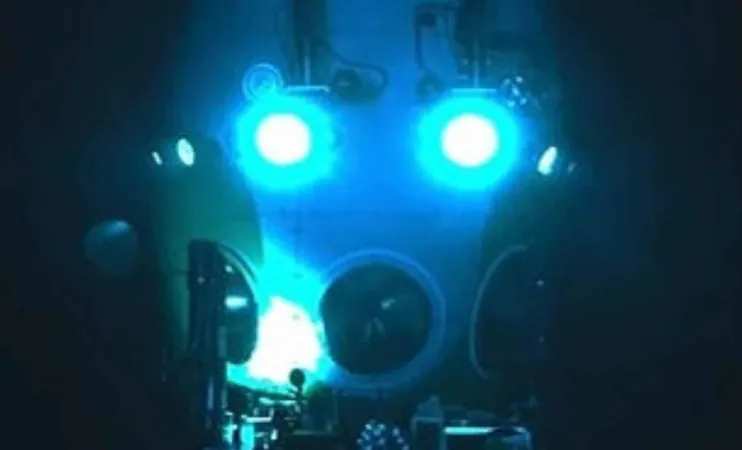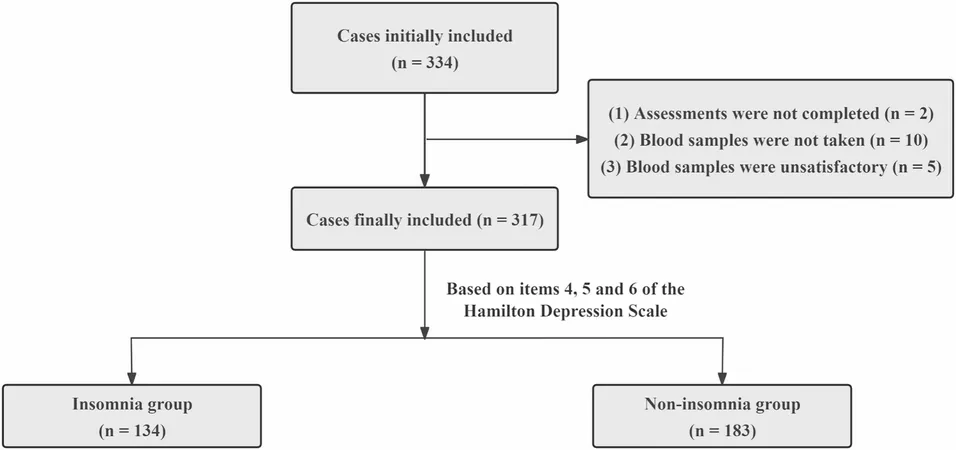
Unlocking the Ocean's Secrets: A Hidden Hydrogen Treasure Beneath the Pacific
2025-08-24
Author: Jacob
A Revolutionary Discovery in the Depths of the Pacific Ocean
A groundbreaking revelation has emerged from the Institute of Oceanology at the Chinese Academy of Sciences (IOCAS). Scientists have unearthed a colossal, hydrogen-rich hydrothermal system lurking over 3,000 meters deep in the western Pacific Ocean, specifically west of the Mussau Trench, within the unassuming Caroline tectonic plate.
Dubbed the Kunlun hydrothermal field, this expansive site covers more than 11 square kilometers, dwarfing the well-known Lost City vent system in the Atlantic by over 100 times. But what sets Kunlun apart isn't just its size; it fundamentally challenges our understanding of deep-ocean geology.
A Catalyst for Change in Oceanic Geology
Professor Weidong Sun, the study's lead author, states, “This revelation demonstrates that hydrogen generation through serpentinization can occur far from mid-ocean ridges, questioning long-held geological theories.” Thanks to advanced technologies including the Fendouzhe manned submersible, researchers have measured impressive hydrogen concentrations in hydrothermal fluids, estimating an eye-popping annual production of around 1 million metric tons of hydrogen—making up nearly 5% of the global underwater hydrogen output from just this single site.
Hydrogen: The Deep-Sea Goldmine
Traditionally, hydrogen in oceans was linked to mid-ocean ridges where tectonic plates diverge and magma rises. This process, called serpentinization, produces hydrogen gas. Until now, it was thought significant hydrogen outputs were only feasible in these ridge environments. However, Kunlun's unique geological features—including pipe swarms and carbonate towers—point to hydrogen production occurring in intraplate settings, while dramatically expanding the potential locations of subsea hydrogen reservoirs.
A Multi-Billion Euro Potential, Ethically Bound
Although the IOCAS team stresses that their discovery isn't a call to action for development, the implications are staggering. With today's green hydrogen prices, Kunlun's annual yield could amount to approximately €5 billion in market value. Remarkably, this hydrogen isn’t manufactured through industrial processes, requiring vast energy or freshwater; rather, it’s naturally generated by geological activity, emerging seamlessly from beneath layers of seawater.
This positions Kunlun as a potential carbon-free hydrogen source that wouldn’t require environmentally invasive methods like drilling or fracking—provided it can be harvested cautiously. The researchers emphasize that their findings are meant to serve as a natural laboratory, warning against ill-advised extraction efforts.
A Forgotten Ecosystem Thriving in Darkness
But the story doesn’t end with hydrogen. Within the Kunlun vents lies a hidden world of unique biological communities that thrive in complete darkness, relying on chemosynthesis—a process that converts chemical energy into life. Shrimp, squat lobsters, and anemones were among the diverse fauna documented, with many likely depending on hydrogen as their lifeblood.
Professor Sun remarked, “What’s particularly fascinating is the ecological potential of this find. These organisms might rely fundamentally on hydrogen-fueled chemosynthesis.”
The Origins of Life: A Glimpse Back in Time
This discovery opens new doors to understanding the origins of life on Earth. Similar hydrogen-rich, alkaline environments have long been hypothesized as the birthplace of life. Compared to the Lost City, Kunlun offers more stable geological structures, potentially providing a better evolutionary environment over time.
For astrobiologists, the implications extend beyond our planet. Comparable ecosystems might exist beneath the icy surfaces of moons like Europa or Enceladus, where chemical interactions occur far from sunlight.
As curiosity mounts and investment in hydrogen transitions increases, Kunlun stands out as a beacon of hope in the pursuit of sustainable energy and advancing our understanding of life itself—under the waves, in the shadows.









 Brasil (PT)
Brasil (PT)
 Canada (EN)
Canada (EN)
 Chile (ES)
Chile (ES)
 Česko (CS)
Česko (CS)
 대한민국 (KO)
대한민국 (KO)
 España (ES)
España (ES)
 France (FR)
France (FR)
 Hong Kong (EN)
Hong Kong (EN)
 Italia (IT)
Italia (IT)
 日本 (JA)
日本 (JA)
 Magyarország (HU)
Magyarország (HU)
 Norge (NO)
Norge (NO)
 Polska (PL)
Polska (PL)
 Schweiz (DE)
Schweiz (DE)
 Singapore (EN)
Singapore (EN)
 Sverige (SV)
Sverige (SV)
 Suomi (FI)
Suomi (FI)
 Türkiye (TR)
Türkiye (TR)
 الإمارات العربية المتحدة (AR)
الإمارات العربية المتحدة (AR)